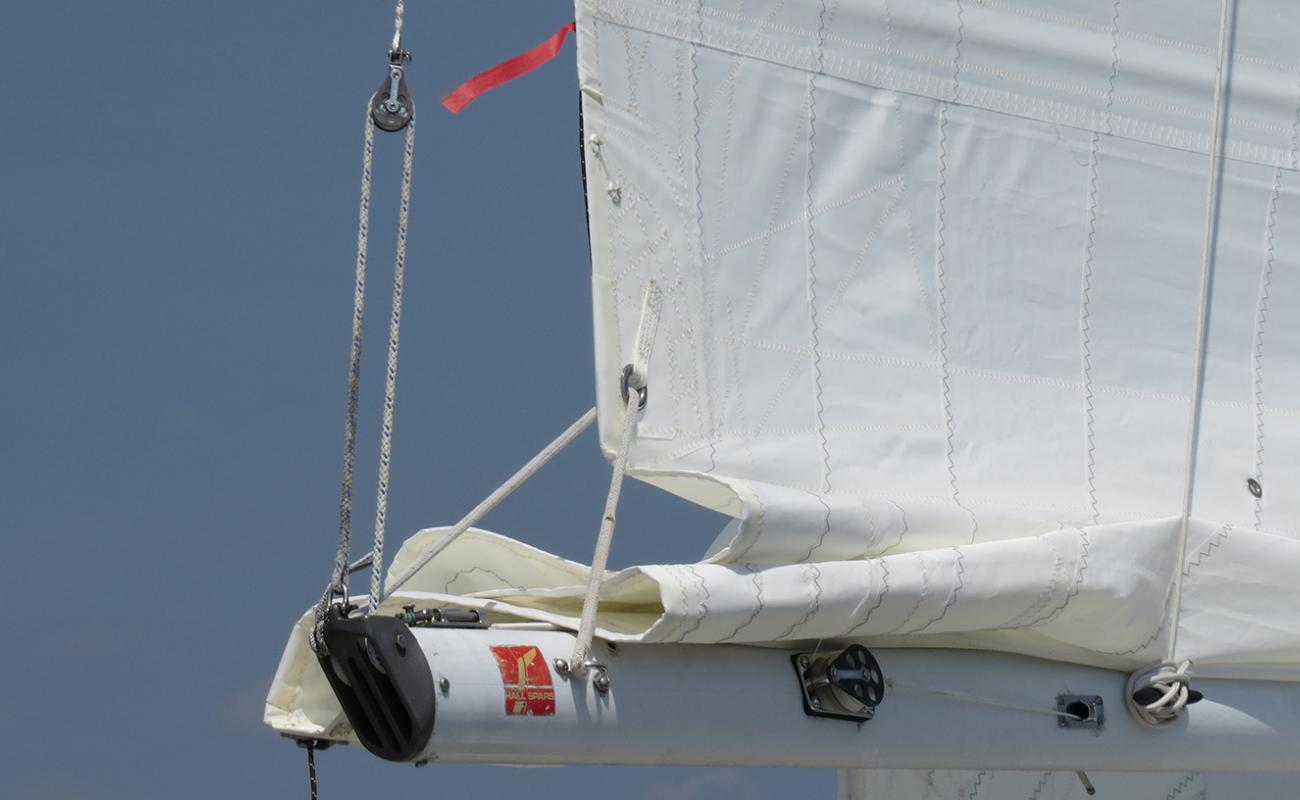HOW TO REEF A MAINSAIL
Mainsail Reefing Setup
There are a number of effective reefing arrangements, but all have two common elements. The first is ease of use; the reef should be easy to set and shake. Second, the reefed sail must have a shape appropriate for the conditions, which means flat. The reefing system must pull the clew out along the boom, like an outhaul, as well as pulling down.
When reefed, all the load should be on the reef tack and reef clew. The reef points along the belly of the sail are used only to tie up the loose body of the sail; they should not carry any load. Single or double line systems can be set up to allow you to reef without leaving the cockpit. Otherwise you will have to go forward to set the reef tack and/or adjust the main halyard.
Regardless of the particulars, it is important that your system work well, so you are not reluctant to use it. When in doubt, reef. If you’re underpowered, shake the reef.
Here are the basic steps to reef your mainsail:
- Assume a close-hauled or close reaching course.
- Set the autopilot to maintain your course under jib alone, or heave-to.
- Release the mainsheet and vang.
- Lower the main halyard. Pull slack out of the reef line so it won’t tangle.
- Secure the reef tack.
- Re-tension the halyard.
- Tension the reef line. It should be very tight, pulling down and out to flatten the reefed sail.
- Snug the vang and trim the mainsheet.
What is reefing a sail?
Reefing is a method sailors use to make the sail smaller when the wind picks up. Reducing the sail area gives you more control over the boat, helping it stay stable in stronger winds. It’s usually done on the mainsail by lowering a portion of the sail and tying off the excess with reefing lines. This not only changes the sail’s shape to handle the conditions better but also helps maintain boat speed while improving safety.
Additional reefing tips:
- Mark the main halyard line relative to the mast, so you will know how far you need to lower it the next time you reef.
- If you expect to be reefed for a while, tie the reef clew down to the boom with a sail tie, to take the load should the reef line fail.
- Ensure that the reef outhaul is tensioned tightly to avoid any slack, which can distort sail shape and reduce performance.
- Don’t wait until the wind picks up too much. Reefing early reduces stress on both the rigging and the crew and keeps the boat balanced in stronger winds.



























